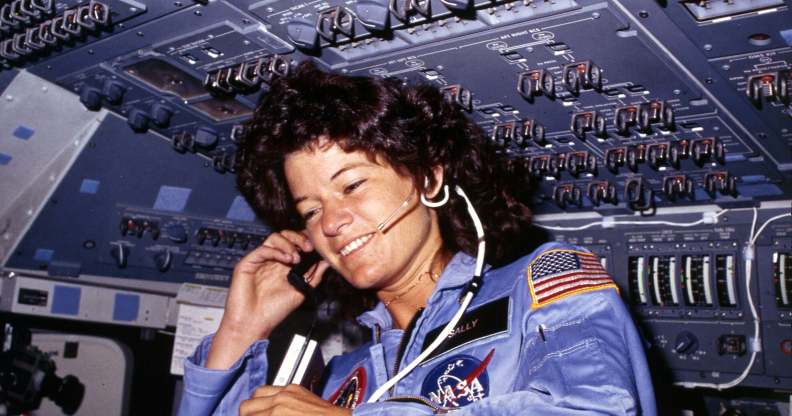Who was the first gay astronaut?

For eons, humanity has looked towards the stars and yearned to reach them – to explore distant moons and planets, and touch the very edges of the universe.
In the last 50 years, we have made incredible progress, setting foot on the moon, landing robots on Mars and even beaming pictures back from as far away as Pluto.
An important part of that journey was Sally Ride, the first known LGBT astronaut.

More than 330 American astronauts have made it to space, but Ride was the first American woman – and LGBT person – to go into space, taking the journey into the giant expanse in 1983.
And she was the third woman in space overall, after Soviet cosmonauts Valentina Tereshkova and Svetlana Savitskaya.
Ride, who earned a PhD in astrophysics, is also still the youngest American astronaut to ever go to space, at the age of just 32.
Before she reached space, the Californian native had to endure sexist media enquiries like “Will the flight affect your reproductive organs?” and “Do you weep when things go wrong on the job?”
When she was asked “Will you become a mother?”, a fed-up Ride tried to avoid the question, before remarking sardonically: “You notice I’m not answering.”
Later, she commented: “It may be too bad that our society isn’t further along, and that this is such a big deal.”
During the expedition, she became the first woman to use the robot arm in space, and also the first to use the arm to retrieve a satellite.
Her second flight, on the Challenger, saw the pioneer spend more than 343 hours in space.
It was also the first spaceflight to include more than one woman, as Ride was joined by Kathryn D. Sullivan.
However, it was only following her death in 2012 that her sexuality was revealed to the general public.
After Ride died of pancreatic cancer at age 61, her obituary revealed that she had been in a same-sex relationship for 27 years with Tam O’Shaughnessy, a friend since childhood.

The couple, who wrote six popular children’s science books together, was confirmed by Sally Ride Science, a nonprofit the astronaut set up and ran with her partner.
Her sister, Bear, spoke out after her death, explaining that her sister never publicly revealed her sexual orientation because of a desire for privacy.
“Sally was a profoundly private person. It was just part of who she was. We chalk that up to being Norwegian,” she said.
“She had a sense of ‘this is family stuff.'”

But Bear emphasised that Ride didn’t hide from the public.
“They went places together; they’re in business together; they wrote books together,” she said.
“We consider Tam a member of the family.
“We all have our dreams and wishes, and that might be yours or mine, but she’s just like, you probably don’t know what her politics are either. It’s a family matter.
“That wasn’t her battle of choice – the battle of choice was science education for kids.
“And I just hope that all the different components of Sally’s life go towards helping kids.”

Bear said that she and her family thought it was “a good thing” that Ride’s sexuality had come out.
In 2013, President Barack Obama awarded Ride with the Presidential Medal of Freedom, the highest civilian honour in the US.
He presented the medal to O’Shaughnessy at the White House, saying in his speech that Sally Ride “didn’t just break the stratospheric glass ceiling, she blasted through it.”
He added that his daughters Malia and Sasha could “set their sights a little bit higher, because Sally Ride showed them the way.”

